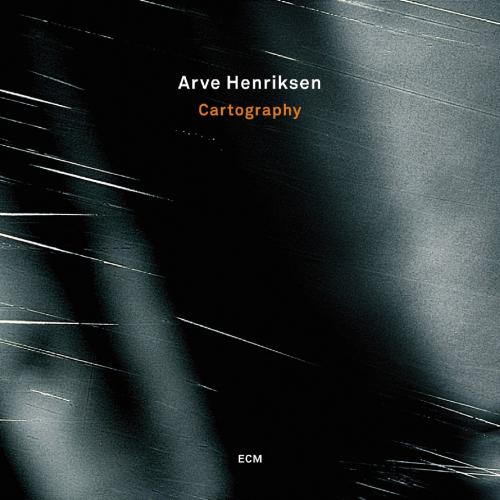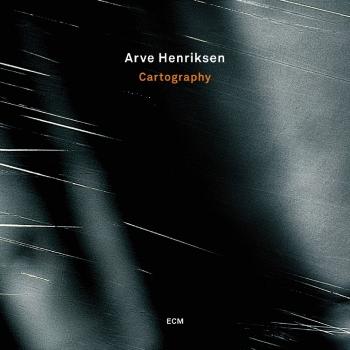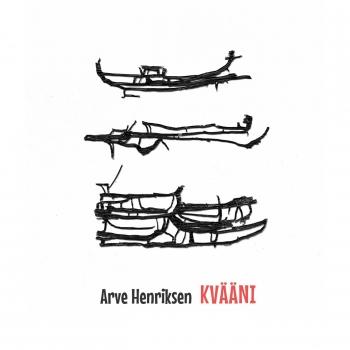
Cartography Arve Henriksen
Album info
Album-Release:
2008
HRA-Release:
11.07.2017
Album including Album cover Booklet (PDF)
I`m sorry!
Dear HIGHRESAUDIO Visitor,
due to territorial constraints and also different releases dates in each country you currently can`t purchase this album. We are updating our release dates twice a week. So, please feel free to check from time-to-time, if the album is available for your country.
We suggest, that you bookmark the album and use our Short List function.
Thank you for your understanding and patience.
Yours sincerely, HIGHRESAUDIO
- 1 Poverty And Its Opposite (Live) 05:36
- 2 Before And Afterlife 06:43
- 3 Migration 05:41
- 4 From Birth 02:45
- 5 Ouija 02:41
- 6 Recording Angel 06:23
- 7 Assembly 03:56
- 8 Loved One 04:05
- 9 The Unremarkable Child 02:05
- 10 Famine's Ghost (Live) 04:28
- 11 Thermal (Live) 02:27
- 12 Sorrow And Its Opposite 04:29
Info for Cartography
The uniquely lyrical, liquid and mellifluous sound of Arve Henriksen’s trumpet has had an important supportive role to play on a number of ECM recordings of the last decade. Amongst them – Christian Wallumrød’s “No Birch”, “Sofienberg Variations”, “A Year from Easter” and “The Zoo is Far”, Trygve Seim’s “Different Rivers”, “The Source and Different Cikadas” and “Sangam” , Jon Balke’s “Kyanos”, Sinikka Langeland’s “Starflowers”, Frode Haltli’s “Passing Images”, Arild Andersen’s “Elektra” ... albums which between them represent a very broad range of musical possibilities. In each context, however, Henriksen has proven to be both a highly-distinctive and uncommonly adaptive player. This versatility provides a subtext for the present disc, which pools a shifting cast of creative musicians from diverse genres including jazz, electronica, ambient and classical music and the world of the remix. Singer David Sylvian makes two appearances reading his own texts, Ana Maria Friman sings fragments of William Brooks’s “Anima Mea” and the voices of the Trio Mediaeval emerge, sampled, on “Recording Angel”. Guitarist Eivind Aarset, and drummer Audun Kleive loom out of the mix, and Ståle Storløkken, Arve’s colleague from noise/rock/improv band Supersilent, has a cameo on “Famine’s Ghost”.
“Cartography”, the art of making maps, is an apt title. Recorded in the studio and in concert in Kristiansand, Oslo, Cologne and London it is almost a map of moods, of landscapes and soundscapes for Henriksen to explore. His trumpet floats and hovers over ever-changing territory.
“Over the last few years, “ says Henriksen, “I’ve been trying to find ways of playing that feel right for me and areas of music that interest me enough to keep returning to them. And I’ve been feeling uncomfortable with the idea of ending up playing ‘improvised jazz’. This album is part of a process of going back to go further. For more than twenty years electronics have been part of what I do, and the collaboration with Jan Bang and Erik Honoré has been inspirational. I like very much their way of bringing together acoustic instrument and electronics, their way of building and combining elements, sometimes from different places and times.” He points out that Bang and Honoré draw inspiration from the work of Jon Hassell, who is also a primary influence on Arve’s ‘vocal’ trumpet sound. There is a sense of a cycle of history completing itself - especially with Hassell, Eno and others now contributing to the Punkt festival curated by Bang and Honoré, where ‘live remixing’ is a standard part of the programming. In that sense, “Cartography” belongs to an alternative tradition of music making that includes improvisation and sound-sculpturing, dubs and remixing and awareness of ambience.
It’s also clearly in line with Arve’s own history. The early interest in far eastern sound and the shakuhachi which triggered investigation into new means of tone-production is reflected once more in pieces like “From Birth”. The work methods employed also extend experiments Henriksen and Bang had begun on the album “Chiaraoscuro” issued by Rune Grammofon in 2004.
The association with David Sylvian has been percolating for a few years. Arve has contributed to some of the singer’s work, including his “Nine Horses” project, and Sylvian has utilised samples of Arve’s trumpet in a Japanese art museum installation piece, “When Loud Weather Buffeted Naoshima”. Material from this source was refashioned into “Before and Afterlife, Part 1”: “The first part of this piece is really David’s production: then Jan Bang began adding material.” (As “Cartography”’s associate wordsmith, Sylvian also provided titles for the tracks here).
Several of the pieces began life as improvisations, “but there were many ways of working. There are also layers of composed music... including sketches Jan Bang sent me as computer file back at the beginning of the project.” Being open to contingency was part of the plan; the work, Henriksen figured, should develop organically. “Recording Angel” is one such instance. Bang had been working with arranger Vytas Sondeckis on another project and began to develop it experimentally. Having recently recorded the Trio Mediaeval (the three singers are also part of a new quintet with Henriksen and Bang), he integrated the voices singing the mediaeval song “Oi me lasso” into his mix. “It fit perfectly into this new soundscape,” Henriksen says.
Currently Henriksen, Bang and friends are exploring ways to bring this music to the stage.
“Cartography” was launched with a release concert in Oslo on October 17 2008.
Arve Henriksen studied at the Trondheim Conservatory from 1987-1991, and has worked as a freelance musician since 1989. “Cartography” is his first recording as a leader for ECM.
Arve Henriksen, trumpets, voice, field recording
Jan Bang, live sampling, samples, beats, programming, bass line, dictaphone, organ samples, arrangement
Audun Kleive, percussion, drums
David Sylvian, voice, samples, programming
Helge Sunde, string arrangement and programming
Eivind Aarset, guitars
Lars Danielsson, double-bass
Erik Honoré, synthesizer, samples, field recordings, choir samples
Arnaud Mercier, treatments
Trio Mediaeval, voice sample
Vérène Andronikof, vocals
Vytas Sondeckis, vocal arrangement
Anna Maria Friman, voice
Ståle Storløkken, synthesizer, samples
Engineered and produced by Erik Honoré and Jan Bang
Arve Henriksen
Born in 1968, Arve Henriksen studied at the Trondheim Conservatory from 1987-1991, and has worked as a freelance musician since 1989.
He has worked with many musicians, including Jon Balke Magnetic North Orchestra/Batagraf, Edward Vesala, Jon Christensen, Marilyn Mazur, Nils Petter Molvær, Misha Alperin, Arkady Shilkloper, Arild Andersen, Stian Carstensen, Dhafer Youssef, Sidsel Endresen, Pekka Kuusisto, Christian Wallumrød Ensemble, Nils Økland, Karl Seglem, Per Oddvar Johansen, Iain Ballamy, Thomas Strønen, Gjermund Larsen, Svante Henryson, Mats Eilertsen, David Sylvian, Jon Hassell, Hope Sanduval, Laurie Anderson, John Paul Jones, Erik Honoré, Toshimaru Nakamura, Trygve Seim Ensemble, Jan Gunnar Hoff, Tord Gustavsen, Giovanni Di Domenico, Tatsuhisa Yamamoto, Gavin Bryars, John Potter, Johanna McGregor, Imogen Heap, Guy Sigsworth, Ryuichi Sakamoto, Bill Frisell, Terje Rypdal, Maria Schneider, Kate Havnevik, Live Marie Roggen, Silje Nergaard, Odd Nordstoga, Kari Bremnes, Sondre Bratland, Jannis Anastasakis, Lars Danielsson, The Source, Vox Clamantis and many more.
He has played in many different contexts, bands and projects, ranging from working with koto player Satsuki Odamura to the rock band Motorpsycho via numerous free improvising groups with Ernst Reisiger, Sten Sandell, Peter Friis-Nilsen, Lotte Anker, Hasse Poulsen, Terje Isungset, Benoit Delbecq, Steve Arguelles, Lars Juul and Marc Ducret.
He has collaborated with the composers Peter Tornquist, Helge Sunde, Terje Bjørklund and Tõnu Kõrvits in cooperation with orchestras and chamber settings like Cikada String Quartet, Nidaros String Quartet, Zapp 4, The Norwegian Chamber Orchestra, Kristiansand and Trondheim Symphony Orchestra, London Sinfonietta, Britten Sinfonia, Deutsche Kammerphilharmonie Bremen, The Norwegian Wind Ensemble and Trondheim Soloists.
He has worked together with video and visual artists like Anastasia Isachsen, Tord Knudsen and Lillevan.
Today he is connected to and in collaboration with:
Supersilent (Helge Sten and Ståle Storløkken)
Trio Mediaeval´s Rimur (Linn Andrea Fuglseth, Berit Opheim and Anna Maria Friman)
Sinikka Langeland´s Starflowers and Magical Forest (Anders Jormin, Trygve Seim and Markku Onaskari)
Saumur (Hilmar Jensson and Skuli Sverrisson)
Warped Dreamer (Teun Verbrüggen, Jozef Dumoulin and Stian Westerhus)
Atmosphéres (Jan Bang, Eivind Aarseth and Tigran Hamasyan)
"Sommeren der ute" (Ellen Bødtker, Jan Erik Vold and Eirik Raude)
Fennesz-Henriksen (Christian Fennesz)
And various percussive settings including Audun Kleive, Helge Norbakken and Ingar Zach.
Henriksen has composed and commissioned music for festivals, films and documentary programs. He has a long discography counting over 140 records in total. Received together with Supersilent The Alarm Award 2004. He has been the artist in residence at Moers Jazzfestival 2006, OIOI-festival in Bergen 2008 and at Molde Jazz Festival 2009. From 2004-2006 he was a part of the European Jazz Launch project. He has received Norsk Jazzforums Buddy Award 2005. Radka Toneffs Memorial Award 2007, Paul Acket Award at North Sea Jazz Festival 2011 and DNB and Kongsberg Jazzfestival´s Musician Award 2011. He has been nominated to Nordisk Råds musikkpris 2009 and also nominated to European Jazz musician of the year 2009. In 2016 he became Doctor Honoris Causa at The University of Gothenburg.
Booklet for Cartography











